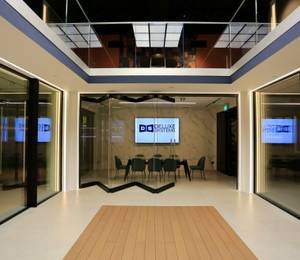Seattle, Washington, USA – LMN Architects has celebrated the opening of the Mukilteo Multimodal Ferry Terminal in Mukilteo, Washington. With input from local tribes, the two-storey terminal building, designed in partnership with KPFF Consulting Engineers, replaces the existing terminal built in 1957 and adheres to contemporary environmental and building standards.
The Mukilteo-Clinton ferry route moves more than two million vehicles and nearly four million riders annually in conjunction with State Route 525, the major transportation corridor connecting Whidbey Island to the Seattle-Everett metropolitan area. With proximity to commuter trains via Sound Transit’s Mukilteo Sounder Station, the new two-storey terminal building’s walk-on ridership is expected to increase more than 100 percent over the next 20 years during peak commute times. The new terminal provides more space for vehicle holding and separates pedestrian and vehicle boarding with an overhead walkway for safer, more efficient loading, especially for people with disabilities.
The building’s longhouse form, derived through a close collaboration with numerous Coast Salish tribes, enriches the passenger experience, streamlining circulation and managing large patron flows with intuitive wayfinding. Vertical transportation cores with elevators and stairs at each end of the structure lead to a linear promenade at the upper level, from which entries to the ticketing and waiting area are visible.
The waiting room is a daylight-filled space with views to land and sea that help orient ferry riders. Tribal cultural motifs created by local, Native American artists James Madison and Joe Gobin are displayed throughout the building, creating a welcoming atmosphere of regional belonging. In conjunction with the terminal, a new waterfront promenade connects a path from downtown Mukilteo, through the terminal and on to the beach, creating an elevated pathway for public use.
LMN Architects worked closely with the Coast Salish tribes, whose traditional fishing rights encompass the area’s coastal waters, to incorporate environmental stewardship into the overall concept. The project’s strong sustainability ambitions started with repurposing the brownfield site, which previously housed a U.S. Air Force Cold War fuel depot and pier. Removing the pier eliminated approximately 10 percent of the Puget Sound’s remaining toxic creosote piles. The structural expression combines advanced energy and water conservation, and the longhouse-style shed roof allows for a full array of photovoltaic panels, meaning the facility can return energy to the grid. The roof canopy is made from cross-laminated timber, sustainably harvested and locally sourced. Heating and cooling the concrete-slab main floor with electric heat pumps efficiently provides interior comfort year-round. A rack-and-pinion window system automatically opens and closes in response to changing conditions, optimizing airflow and comfort. The vehicle holding area features pervious concrete that collects stormwater and filters it through layers of sand before it enters the Possession Sound. Other advanced stormwater treatment systems are used throughout the terminal site.
Howard Fitzpatrick, Principal, LMN Architects, commented: “The design team took the responsibility of building on such a historically significant and sacred site very seriously. While it is impossible to construct a modern facility without impacting the site, our goal was to minimise those impacts, to work with the sun, rain, wind and views that have always defined this coastline to make a building that respects both its site and the culture that has occupied it for thousands of years.”












